Boost Your Content Marketing Strategy in 2020 with these 20 Proven Content Marketing Best Practices!
Updated 2/5/2020
For any business, it’s critical to uncover new ways to increase brand awareness, generate leads and make deeper connections with your target audiences. Over the last 10 years, Content Marketing has taken center stage as a marketing tool to do just that. The impact of a well-planned content strategy can make or break a business. To be successful, it’s important to integrate Content Marketing best practices into your overall business and marketing strategies.
There are definitely right ways and wrong ways to approach Content Marketing. We’ve made the mistakes (10 Big Content Marketing Mistakes to Avoid!) and embraced the wins along with countless other content warriors. We’ve seen what works, what doesn’t and narrowed down the most proven content marketing best practices that can have the greatest impact.
In this guide, we’re sharing these top 20 Content Marketing Best Practices so you can give your content marketing strategy a boost and realize the positive benefits that smart content has to offer!
Content Marketing isn’t easy… but when done right, the results can be truly transformational for your business.
Want the pdf version of this guide? Download it here… FREE!
1. Create a Documented Content Marketing Strategy
This might seem like a no-brainer, but many businesses jump right into content marketing without a written strategy! They just start creating and publishing random content to see what sticks. In a CMI / Marketing Profs 2019 #B2C Research Study, “only one-third of B2C marketers surveyed had a documented content strategy!” That may earn some short-term wins, but over the long-haul will just not be sustainable.
Documenting a content marketing strategy is necessary to know where you are, where you want to be and how you plan to get there. It doesn’t need to be a robust document. It just needs to establish your content marketing goals and objective and how you intend to reach them. Of all the content marketing best practices we’ve uncovered, this and the last one are super critical to the success or failure of a given strategy.
Every business should, at the very least, define the who, what, where, when, why and how of your content marketing plan. Who is your intended audience? What problems do they have that you can help with and/or what do they derive value from? Think about this from your buyers perspective and where they are within the buyers journey. Where does your target audience consume content? When does your target audience consume content? How does your target audience prefer to consume content?
A well-thought out content marketing strategy will set the tone for your content marketing efforts, provide a baseline from which to measure your results and serve as a guide to keep you on track with your efforts. If there is only one content marketing best practice you adopt – this should be it!
Be sure to check out our comprehensive guide How to Master Content Marketing as well as our downloadable 12 Steps to Better Content Marketing checklist to create your content marketing strategy quickly and effectively!
2. Establish Your Content Marketing Goals and Objectives
What is the purpose of your content marketing? If you are creating content without purpose, then you are simply adding to the noise. Be decisive with what you want to achieve via content marketing (whether it is generating awareness, driving engagement or nurturing leads) and be clear about those goals and objectives from the start. This will be your guide to every piece of content you publish going forward. Make sure you create S.M.A.R.T. goals (Specific, Measurable, Attainable, Relevant and Timely) and establish benchmarks.
When defining your goals, it’s helpful to establish a content marketing mission statement as well. The concept of a content marketing mission statement, as Joe Pulizzi from the Content Marketing Institute puts it, is quite simple… it’s all about putting the “why” before the “what”. Your content marketing mission statement sums up who you are trying to reach (your core audience target), what will be delivered to this audience (information, insights, tips, resources, etc.) and what the outcome will be for this audience (helping them with what they need, want). This mission statement should serve as a litmus test for the content you produce and publish.
Content Marketing isn’t about you or your products or services. Instead it’s about what you stand for. It’s about the needs, wants and pain points of your target audience… and how you can provide the information, resources and inspiration they are seeking. This is what your mission statement is about and forms the basis for your goals and objectives!
3. Know Your Target Audience
Understanding your target audience, what their needs and wants are, and how you can best serve them is essential to developing a successful content marketing strategy.
Research your target audiences (prospects, leads, customers, advocates, partners, investors, donors, volunteers, board members, etc.) and uncover as much detail as possible about each. Understand their demographics and psychographics, their buying behaviors, their interests and their goals and objectives. Then, create buyer personas to help define your ideal customers and/or audiences. This will provide you with a general representation of different segments you are targeting. You can download this helpful buyer persona template from Hootsuite to create your personas, quickly and easily.
Be sure to look at any gaps that may give clues as to how you can delight your audience with content. Uncovering the unmet needs and/or pain points of your audience is a true sweet spot for content marketers.
Be mindful of where, when and how your audience consumes content as this will impact the type of content you create, the format you deliver it in and the channels you utilize. When you are looking to implement content marketing best practices, this one will certainly have far-reaching benefits for your business.
4. Always Provide Value
While this seems like an obvious best practice, it’s sometimes hard to resist joining the rat race to push out more and more content. When it comes to content marketing, providing value should be your top priority.
The best approach for your business is to be keenly in tune with what your audience craves. Don’t create content for the sake of creating content. Your audience will be underwhelmed and will begin to tune you out.
A study by Meaningful Brands showed that “84% of people expect brand to produce content that entertains, provides solutions and produces experiences and events.” Ensure that your content is purposeful and provides value to your audience each and every time. In doing so, you will gain the trust and loyalty of your target audience time and time again. Not only will they consume your content, but they will seek out your content because of the value it provides them. Great content is a win-win for your audience and for you.
There a many ways to provide value to your audience. Value can be in the form of inspiration, entertainment, information, education, help and rewards. Knowing your audience and how/what they derive value from can help you determine the type of content you provide. If you start with your audience in mind first, then this comes naturally. A customer-focused content marketing strategy is the key to your success.
Be sure to complement your value-based content with interesting visuals and a unique perspective to not only capture your audiences attention, but to keep it!
5. Utilize an Editorial Content Calendar
Many businesses approach content marketing from a less than strategic mindset. A study by DMA revealed that the biggest challenges for content marketing are lack of data and lack of strategy! With so many other things going on in your business, content marketing can often feel either too overwhelming or like an after thought. It’s the “let’s throw it on the wall and see if it sticks” approach that typically leads to sporadic results.
Ad-hoc content marketing will only get you so far. Stay on track and keep a consistent drumbeat by creating an editorial content calendar that highlights content themes, content types, distribution channels and more.
This may seem daunting at first, but it doesn’t need to be overly complicated! Create a calendar that works for you and your business… whether that’s a detailed monthly plan or a simple rolling weekly plan. The key is to map it out and stick to it. Your content will be more consistent and your results can be better tracked.
Scheduled content per platform helps you keep to a regular social media drumbeat – but don’t forget to interact and engage with your audience. That type of interaction can’t be scheduled, but is a must-do for social success!
There are many ways to track your content marketing efforts, but for most businesses a simple spreadsheet will do. Be sure that all responsible parties have access to your content calendar and that someone is the primary owner. You can find several templates and tools online to help you create an editorial content calendar that works for your business. We love the calendar template provided by HubSpot for its versatility.
6. Be Consistent
Consistency is key in content marketing. Establish what type of drumbeat makes sense for you and your target audience, whether that’s multiple posts per week or multiple posts per day. When you are consistent, your audience is trained to expect great content from you. They begin to rely on you for the value you provide. They become loyal. This is what marketers like to call the “know-like-trust” factor. At the end of the day, people want to do business with those that they know, like and trust. Your content can play a big part in this process.
As we’ve noted, producing consistently great content is no easy task. In fact, “consistency and capability” and “how to be consistent across channels” are among the top content marketing challenges faced by businesses, according to a recent Agency Survey by CMI. That’s why it’s important to utilize systems as much as possible to make content creation and publishing a streamlined process. A great place to start is by creating templates. Templates can help reduce the time it takes to create content while also keeping everything you publish consistent.
Not only does this relate to our previous point about utilizing a content calendar to keep you on track… It also should be applied to consistency in terms of the branding of your content, the general form or format and how you present this content to your target audiences. It’s being consistent with your tone and personality. It’s being consistent with the look and feel.
What you say, how you say it, when you say it and what it looks like all matter! Make your content easily recognizable to your target audience by creating a consistent brand voice. Make sure your content is relatable, highly targeted and on-brand for your business.
7. Balance Content Creation with Content Curation
As noted previously, great content takes time to create. Most businesses, especially small businesses, don’t have endless hours to spend on creating content. An important aspect of content marketing, that many businesses discount, is that not all content has to be originally produced! In fact, you should include utilizing content produced by others as part of your content marketing strategy. This is called content curation.
This doesn’t mean you can just start copying any content that exists and claim it as your own. That’s copyright infringement and definitely NOT a content marketing best practice! Instead, create a content curation strategy in which you share content from other sources that is relatable, reliable and relevant to your target audience!
Sharing relevant content that complements and adds value to your own content is a great way to stay consistent and extend your thought leadership. You can also extend your reach and help build your audience with curated content. Just determine the right balance for your business.
Be sure to give credit where credit is due and let others know you are sharing their content. It’s a great way to build relationships and spark engagement. It can also encourage others to share your high value content. A win-win!
8. Repurpose Your Best Content
This is one of our absolute favorite content marketing best practices because it can be so powerful! If you take the time to create great content, then you’re going to want to maximize the life of it. Repurposing your content allows you to share your originally created content in different forms, formats and styles. Create a content repurposing strategy to take advantage of your best performing content.
You’ll want to be in-tune with your analytics to determine how different content resonates with your target audience. Make a note of your best performing content (i.e. content that’s generating awareness, engagement and/or action!). Then, it’s all about transforming that content into something slightly different… whether you turn a simple blog post into a white paper or a checklist into a video. Let your creativity take over and think about powerful ways to make your content shine in a different light.
We like to think about content repurposing in 3 ways: deconstructing it, building it out and reformatting it. The first approach is taking your content and breaking it down into bite-sized pieces of content. An example would be tweeting quotes or high-level concepts from an in-depth blog post. The second approach is taking existing content and building it out into something more substantial. An example of this could be turning a high-value blog post into an even more substantial lead magnet. The third approach is to completely reformat your content. Perhaps you have a short-form blog post that performs well. You could take this blog post and expand on it in video form. Adding a visual element takes your content into a completely different place.
Keep an eye out for opportunities to repurpose your best content!
9. Be a Great Storyteller
The best content tells an intriguing story. It has elements of a great book… suspense, action, emotion, drama, intensity, entertainment and more. Stories are important because they are relatable. This applies to your content as well.
A great story has 3 essential elements: characters, conflict and resolution. In relation to your content marketing strategy, your characters are your buyer personas. Who’s your audience? What narrative are you speaking to them in? The conflict is the need, want or pain point that your target audience is experiencing. This is the key to good storytelling! If you don’t have a conflict, then you don’t really have a story. Finally, the resolution is where you share your knowledge and expertise to help your audience solve their issue. You give them what they have been looking for.
Have you ever heard the statement “give your best stuff away”? Many businesses are terrified to do this. They feel if they give away too much information that their target audience won’t need them (or their products or services). But, most often this just isn’t the case. Great content sets you up as a valued resource. You become the subject matter expert on the topic your audience is most interested in. As a result, your audience will place more trust in their relationship with you and think of you when they need help.
People can derive significant value from your content… it could be the inspiration you give, the insight and tips you share or the entertainment you provide. When you package it as an exciting and rewarding story… you’ve got a great chance to make a lasting impression.
10. Think Quality Over Quantity
We have established that being consistent is critical for content marketing success, and keeping to a regular drumbeat with your content is an important element of this concept. But, it is even more critical that content marketers never place an emphasis on quantity over quality.
As the space for content gets more and more crowded, we are seeing marketers focus less on quantity and more on the quality of their content. In fact, as pointed out by Point Visible Content Marketing Statistics & Trends: “76% of Content Marketers prioritize delivering content quality over quantity.” Content for the sake of content, whether curated or created, is never a good idea. Period. Content that provides no value, purpose or relevance to your business can do more harm than good. Every piece of content published should be run against the test of “does this provide value to my target audience?” If the answer is no… then you are creating/sharing content simply for the sake of creating/sharing content.
It’s not about how much content you produce, but rather the quality of that content in terms of value and consistency. A key to success in the content creation process is to determine the best timing for your content creation and distribution based on your own resources. Having clearly defined roles and responsibilities for your various content marketing tactics will help define what your capabilities are.
Of course, doesn’t mean you can slack off and only create one great piece of content once or twice a year! Be sure to gauge your audience interest in your content and balance this with how often you need to produce content to keep them engaged, without sacrificing quality.
Download a PDF version of this Guide
11. Ensure Your Content is Shareable
Creating great content is one thing… getting it in front of your target audience is another. Ensure that your content is shareable by making it very easy and obvious for others to share it on social networks, via email or other channels. So much content discovery happens when content gets shared. According to Nielson, “Recommendations from those in our network remain the most credible form of advertising among consumers.” Having others share your content is infinitely more powerful than when it comes directly from you!
The extent to which your content is shared can also be used as a signal of your content performance and relevance. Use these cues to hone and tweak your content strategy.
Don’t underestimate the power of social media. Optimizing your content for social sharing can have a huge payoff. Make key takeaways “tweet-able”, craft your meta descriptions carefully and create images designed specifically for social sharing. The right visuals can make a big impact on your content. Make your visuals sized and formatted to each channel. Adding social share buttons to your blog and/or links to your content will help make it more shareable amongst your audience.
Don’t shy away from asking your trusted audience, your advocates, to share your content as well. Great content becomes viral when it is shared. Your advocates have already proven their loyalty to you. So when it comes time to ask them for a quick request to share your amazing content, they are typically happy to do so. Commenting and engaging with your audience can aid in getting it shared as well. Encourage people to join in the conversation and your reach will expand immensely.
12. Create Discoverable Content
Not only is discoverability one of our proven content marketing best practices, it’s also just a smart business best practice! When you take the time to create high quality content, you want it to be discovered! If no one sees your great content, it’s useless. So, once the content creation phase is over, you need to switch gears and move swiftly into the content optimization phase. Here, you will implement smart keyword strategies and SEO techniques to optimize your content for discoverability.
According to Search Engine People, “Quality content is the key factor in any good SEO strategy. Improvements in content have been known to increase blog traffic by as much s 2,000%.” It’s important to note that you should always prioritize creating content for the humans that will consume it, not the search engines that will crawl it. If your content provides value and is high-quality, your target keywords should naturally be evident. You may need to do a little bit of minor tweaking to ensure you have the right keyword density, that your titles and meta descriptions are relevant and that you meet other technical SEO requirements. But, you shouldn’t have to rewrite the majority of your content to make it search optimized!
When sharing on social, utilize your target keywords and/or hashtags as this can aid in being discovered across the different social platforms. Be sure to make your images the right dimensions and quality for each social platform as well. A one size fits all solution isn’t going to cut it!
If you are publishing content on your website or blog, it is essential that your site is optimized. If your site loads slowly or isn’t mobile responsive, then it will directly hurt your chances of anyone discovering your content. Website optimization is critical for every business in this world of digital discovery. This should be a top priority if your site performs less than desirably or is very dated. Check out our Web Design Best Practices to see how your website stacks up!
13. Diversify Your Content Offerings
Experimenting with the type of content you share is a must! Don’t fall into a pattern of only relying of one type of content or one platform to share it. Keeping in mind that your content marketing must be consistent, be open to testing out different formats and channels. A good rule of thumb is to reserve about 10% of your content marketing to experimenting. Be sure to setup analytics to monitor your content performance so you can easily determine what’s working.
Content can come in many different forms, including white papers, blog articles, videos, podcasts, tweets, stories and more. It’s important to keep your content fresh and current by utilizing a variety of different types and styles. As you tip-toe into new content territories, it’s important to stay on-brand. No matter the form or format, your content should always be relevant and provide value to your target audience.
Diversifying your content also applies to your repurposing strategy. Think of all the possibilities of changing up your content to extend it’s life, whether it’s converting written to visual, video to social, and everything in between.
Making your content available across multiple platforms and in different formats also helps with brand recognition. Keep in mind that audience preferences change, social platforms change and the ways people consume content change. If you stay on top of these changes and trends, you’ll be in a better position to adapt your content offerings as necessary.
14. Use Content to Differentiate Your Brand
There’s a lot of content noise out there and your target audience is likely already drowning in most of it! As consumers, we are presented with more messages in a day than we can humanely process. How can you differentiate your business and get your content noticed? What can you offer that your competitors aren’t? How can your content set you apart?
When done right, content marketing can help to generate brand awareness, drive leads, convert prospects into customers, deepen customer loyalty and elevate your business. And at it’s most powerful, content marketing can be used as a means of differentiation.
You can use content marketing to position your organization to stand out from the competition. Look at what your peers and competitors are doing with content marketing and think about all the unique ways to do things differently. It’s important to consider how you want to be perceived in the eyes of your target audience. That’s what matters most. By focusing on the customer experience you want to achieve, you can cater your content to showcase your unique perspectives with an audience-first approach. According to Ion Interactive, “Customer retention improves by 42% when the customer experience is improved.”
From sharing your thought leadership to gain credibility within your niche to luring new customers in with valuable insights of how you can solve their issues… the opportunities are endless for you to stand out. Great content gets noticed. Remarkable content goes viral. Remarkable content is different. Think about creating remarkable content each and every time and you will reap the true benefits of smart content marketing.
15. Balance Evergreen and Trending Content
There are benefits and drawbacks of both evergreen (long lasting) and trending (short life) content. A smart strategy is to strike a balance between the two. It’s definitely better to tip the scale more towards the side of evergreen content as it provides multiple opportunities for repurposing. Optimally, you’ll want to incorporate both types of content into your strategy to enjoy the benefits of each.
Taking advantage of trending topics allows you to be current and in-the-now. With trending content, you can ride the wave of excitement and energy of current news-worthy topics. But, to be successful with this, you will need to act very fast! The key to trending content is to be part of the current conversation. But note, there are some drawbacks to trending content. As Ahrefs notes, “Trending content can give your business an initial burst of traffic – a “spike of hope” but overtime as interest wanes, traffic stalls and becomes a “flatline of nope!””
It’s important not to force a trending topic into your content strategy if it doesn’t make sense for your business. Trending content still needs to be relevant to both your business and your audience. If you try to tie-in unrelated content into your mix, you will end up confusing your audience and diminishing your credibility. Stick to what you know.
Evergreen content, on the other hand, gives you the advantage of longevity. Great content that lasts the test of time is priceless. The advantage of this type of content is that you spend less time creating content and can focus your energies instead on leveraging that content. The challenge is obviously to create content so good that it stands the test of time. Evergreen content is a great source of content repurposing as well. It’s the content gift that keeps on giving!
16. Be Creative
Creativity can be a key differentiator for your brand as well as your content. Think about how to structure your content creatively to make it stand out. Garner the attention of a larger audience with eye-catching visuals, interesting headlines and thumb-stopping content!
Visual content marketing is a powerful way to add creative flair and get your content seen. From jaw-dropping images to attention-grabbing videos, visual elements are often the key to visibility. According to HubSpot, “32% of marketers say visual images are the most important form of content for their business.” Luckily, there are a plethora of tools available to content marketers to make image and video creation a breeze. Some of our favorites include Canva, PicMonkey, Wave.Video, and Animoto to name just a few!
Images, videos and smart headlines have been proven to outperform other types of content and are great for engagement and conversions.
80% of marketers use visual assets in their social media marketing. Video (63%), alone, has also surpassed blogging (60%) in usage as a social media marketing asset. (Social Media Examiner)
32% of marketers say visual images are the most important form of content for their businesses. (HubSpot)
Think outside the box and give your audience a different angle to make your content even more interesting. As a marketer, you have a limited window to capture someones attention. Creativity in your content is a must to stand-out, grab the attention of your target audience and draw them into your story.
17. Engage With Your Audience
Content marketing should never be a “set it and forget it” approach. You can’t simply publish your content across as many platforms as possible and then sit back and wait for something to happen. In most of our content marketing best practices, we mention that content marketing takes a lot of effort – that’s no secret. But content marketing isn’t just about sharing great content… the other equally important element is engaging with the people who consume your content. This takes a bit of effort on your part as well.
One of the most important things you can do as a part of your content marketing strategy is to help spark engagement with your content. Ask questions, answer questions and extend the conversation at every given opportunity. It shows that you care about your content and your audience. Give your audience someone to talk to and it makes your brand and your business more human and authentic!
When you engage with your audience, they begin to get to know you on a whole new level. They begin to trust you and will keep coming back for more if they like you. The know-like-trust factor is such an important element of content marketing. Engagement is your best lever to build relationships with your audience, so be sure to take advantage of this huge opportunity. According to a Pardot Research study, “80% of people on social media choose to follow brands based on whether their content feels and sounds authentic.”
Be sure to respond to every comment and question you receive in a timely manner. These inquiries just may lead you to your next piece of value-based content! Questions are typically cues to what your audiences wants, needs or craves. When you track these questions you naturally create a content topic list to fuel your content marketing efforts in the future.
18. Always Be Testing
We like to adhere to the ABT rule… Always Be Testing! Content marketing offers a great opportunity to test different formats, new marketing channels, different value-drivers or targeting new audiences. It’s a good rule of thumb to earmark 10% of your content marketing efforts to trying new things. But remember, consistency is still key! Even while testing, you need to keep your content relevant to your audience and true to your brand.
Keep in mind that your efforts might not always pan out… and that’s ok! Content Marketing is an interactive process of testing and optimizing to ensure you are continuously driving value to your core audience. Staying innovative and exploring new opportunities will keep you on the forefront of what’s new in content marketing. It will also keep your content fresh and exciting.
Explore opportunities to not only optimize your future content, but also your older content. This is called historical optimization. Essentially, historical optimization is taking your older content (at least a few years old) and republishing an optimized version of it. Look at different topics that you can rank for and that your audience has a keen interest in. Identify opportunities to improve the content by making it more accurate, fresh and/or comprehensive. As HubSpot notes, “historical optimization should be a piece of your overall blogging strategy — not the whole strategy.”
Keeping all of your content optimized will help with your overall SEO. Continuously improving on your content and ensuring it’s relevant aids in boosting your domain authority and relevance. Stay curious and continually learn from your content marketing efforts!
19. Drive Traffic and Nurture Leads with Content
The purpose of content marketing is to provide value to your audience. It’s definitely more about storytelling than selling. But, that doesn’t mean you can’t drive traffic and generate leads through very specific and purposeful content. Driving traffic to your website and generating leads is one of the best side-effects of successful content marketing.
You’ll want to map your content marketing efforts to your buyers journey. This is where your buyer personas come in very handy! You can use your buyer personas to identify the type of content needed in every phase of the customer journey. Then, by creating specific content suited for each phase, you essentially help guide your audience down the path from awareness to conversion and decision-making.
When creating content, look for opportunities where it makes sense to utilize lead magnets. Lead magnets (gated or un-gated)offer your audience a piece of high-value content (ie. downloadable eBook, Checklist, Template, etc.) in exchange for contact information, typically an email address. This can be an effective way to build your email list with highly targeted prospects.
It’s important to segment your email list and take each lead appropriately to capture the type of lead magnet and stage in the buyers journey. Once you have secured a lead responsibly (with permission), then you can utilize content marketing funnels that drip additional relevant and value-based content to your leads. The end-goal is to drive them through your inbound strategy and convert them into customers.
20. Measure, Tweak, Repeat
“Great content marketers do two things differently than the rest: They document their content marketing strategy in some way, and they review and consistently refer to the plan on a regular basis.” — Joe Pulizzi, Content Marketing Institute. Of all the content marketing best practices, the first and last in our list are really imperative.
Remember those S.M.A.R.T. goals and objectives you created as part of your content marketing strategy? This is where they become insanely important! When you set your goals and objectives you also established a baseline level of performance that can now be used as a benchmark indicator for your content marketing efforts.
For each goal you outline, identify the key performance indicators (KPI’s) you’ll use to evaluate your content marketing effectiveness. Maintaining a KPI dashboard can be immensely useful in tracking what is most important to your business. As you review your KPIs, make note of what improvements are needed. Optimize your content marketing strategy and tactics accordingly and track what impact there is. Look at both your organic and paid content marketing initiatives and measure your ROI for each.
For your organic content, track the performance in terms of web metrics, social media metrics, email metrics and conversion metrics. You can often times uncover the greatest opportunities for paid content promotion by looking at what’s performing the best organically! For your paid content, look at metrics such as your quality score, CPC, CPA, close rate and ROAS (return on ad spend).
It’s a continuous effort, but over time you will recognize patterns of success, what your audience resonates with, and the types of content that deliver optimal value to both your audience and your business.
Save and Read Later – Download the PDF of this Guide!
Key Takeaways:
Adopting these 20 content marketing best practices into your strategy will set you up for success. It all starts with a smart content marketing strategy that outlines your purpose as well as the who, what, where, when and how of your content marketing efforts. Measure your efforts and tweak your strategy often to ensure you are always putting your best foot forward. Have any content marketing best practices to add to the list? Tweet us and let us know!
Want more Content Marketing and Strategy tips and insights? Download our free eBook: Mastering Content Marketing and get tons of pro-tips, actionable insights, and recommendations on creating a killer content marketing strategy.
If you liked this article, we encourage you to sign up for our bi-weekly Newsletter for all our updates! Thanks for reading our blog!
Darcy Schuller is the Chief Digital Marketing and Brand Strategist at Suvonni, an innovative boutique digital marketing agency based out of St Petersburg, FL. As a leader in the digital marketing space, Darcy is passionate about helping clients build stronger brands through elevated customer engagement, social media marketing, content marketing and dynamic web experiences. Darcy is a respected marketing thought leader, speaker and consultant.


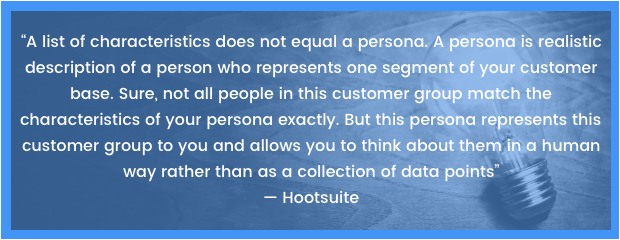

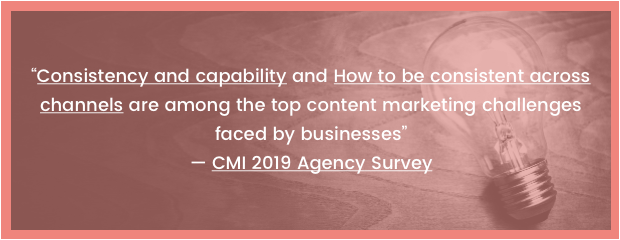


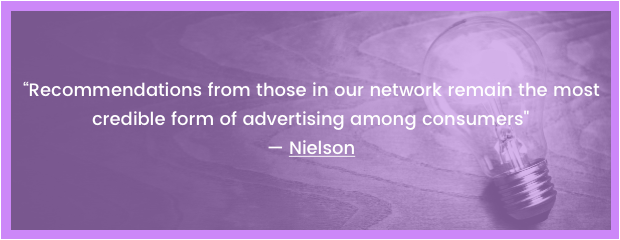
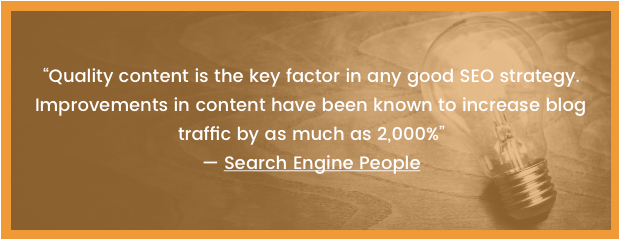
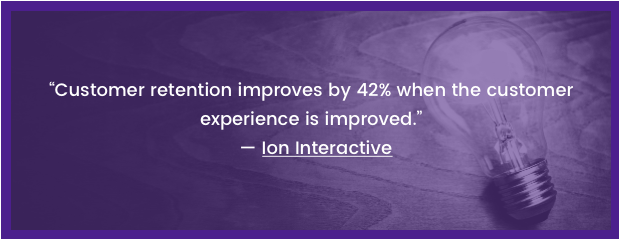
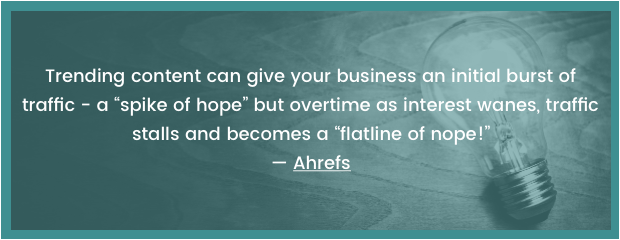


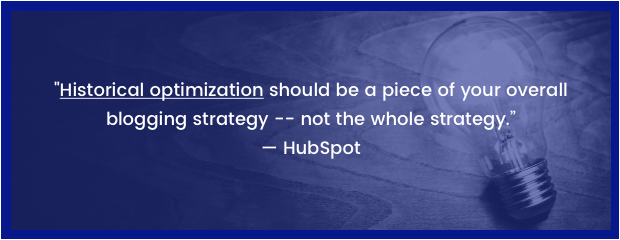
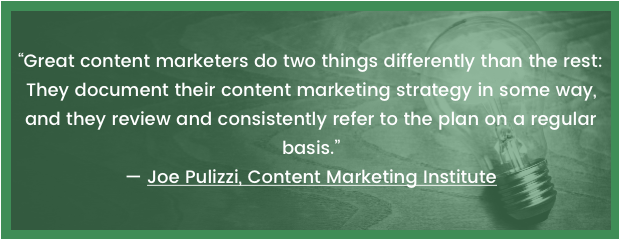

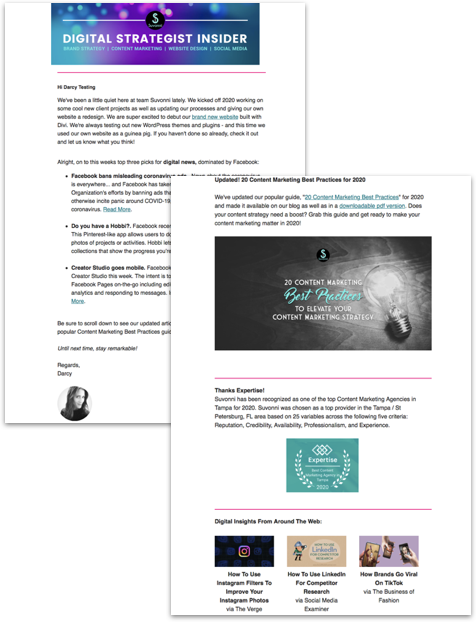
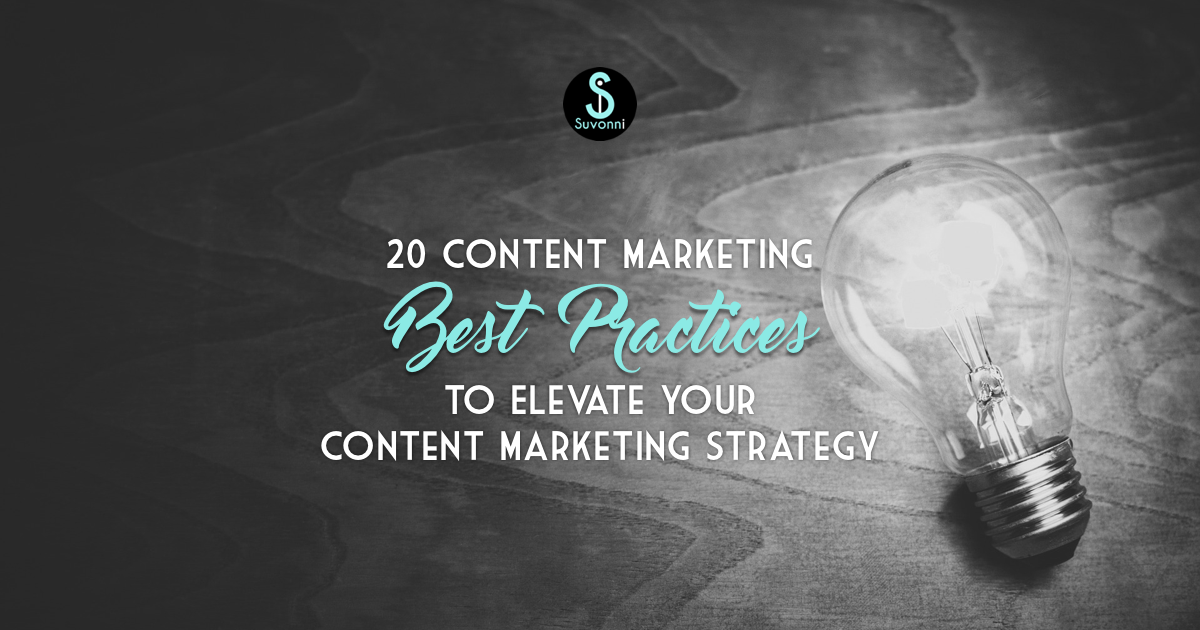
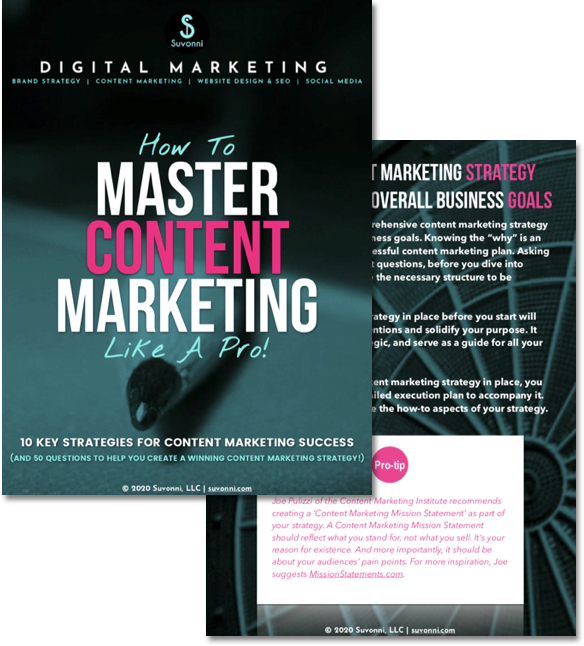
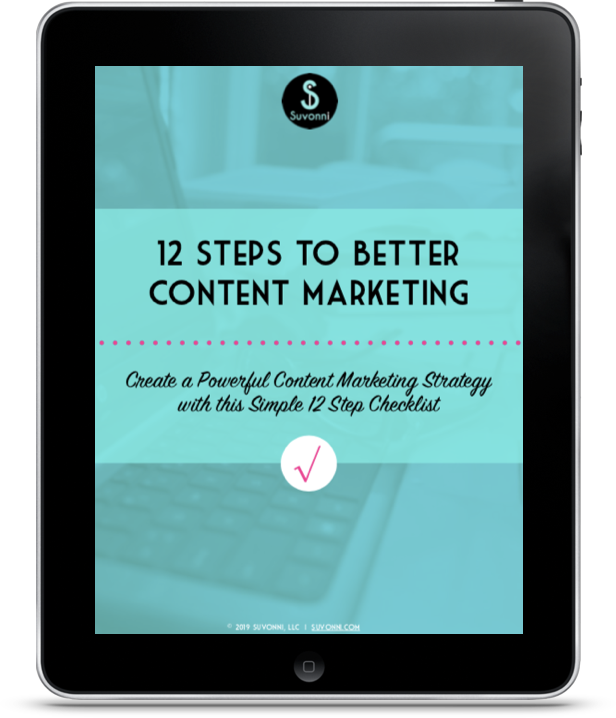
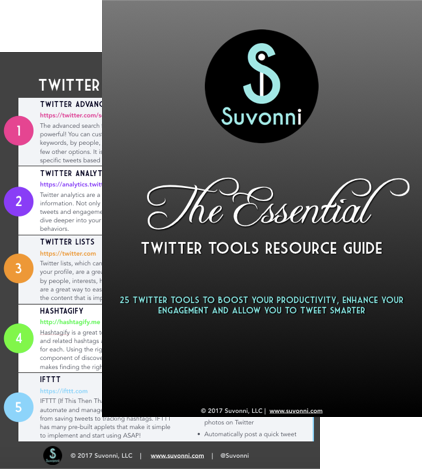
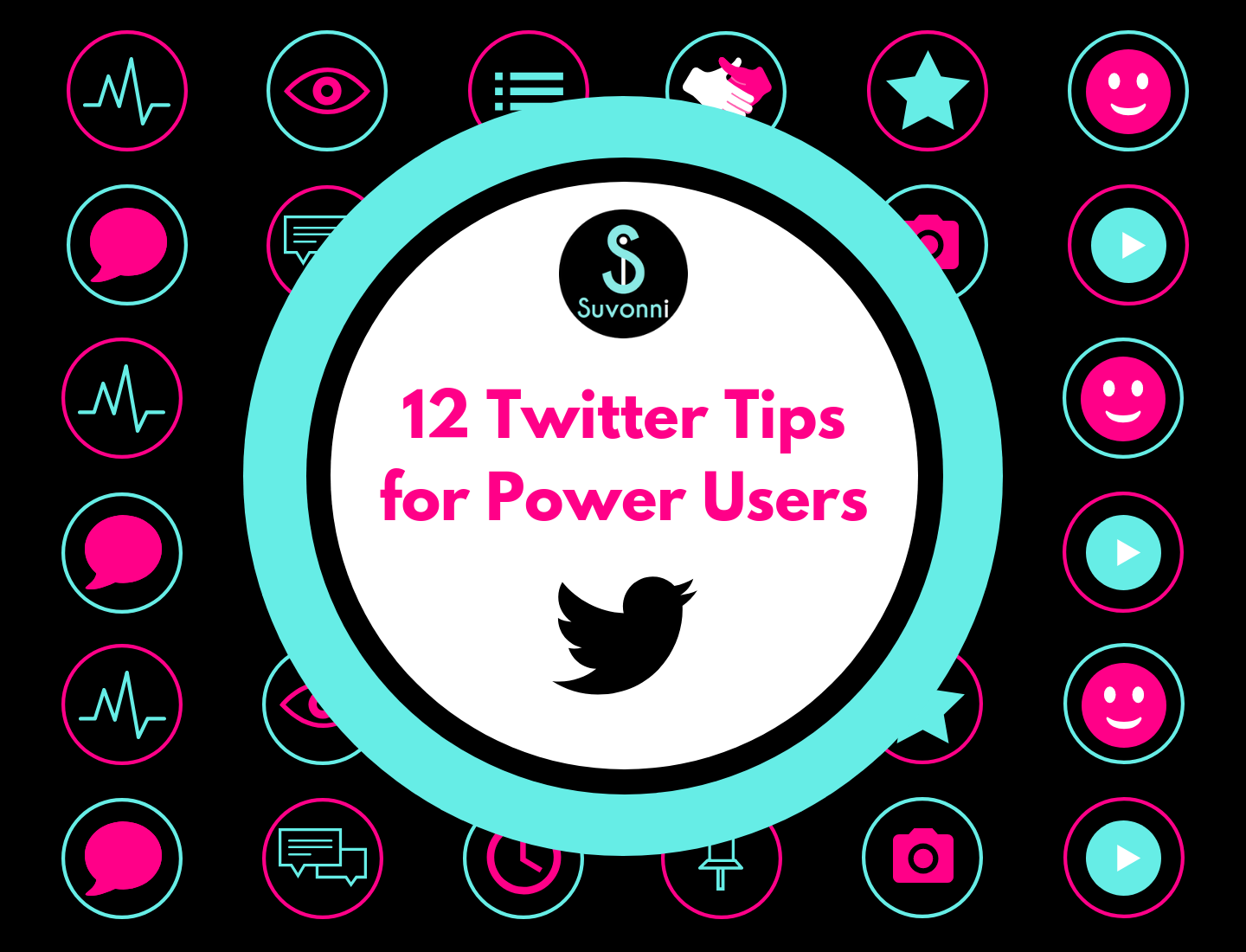

Great comprehensive guide – very helpful. Thank you!!